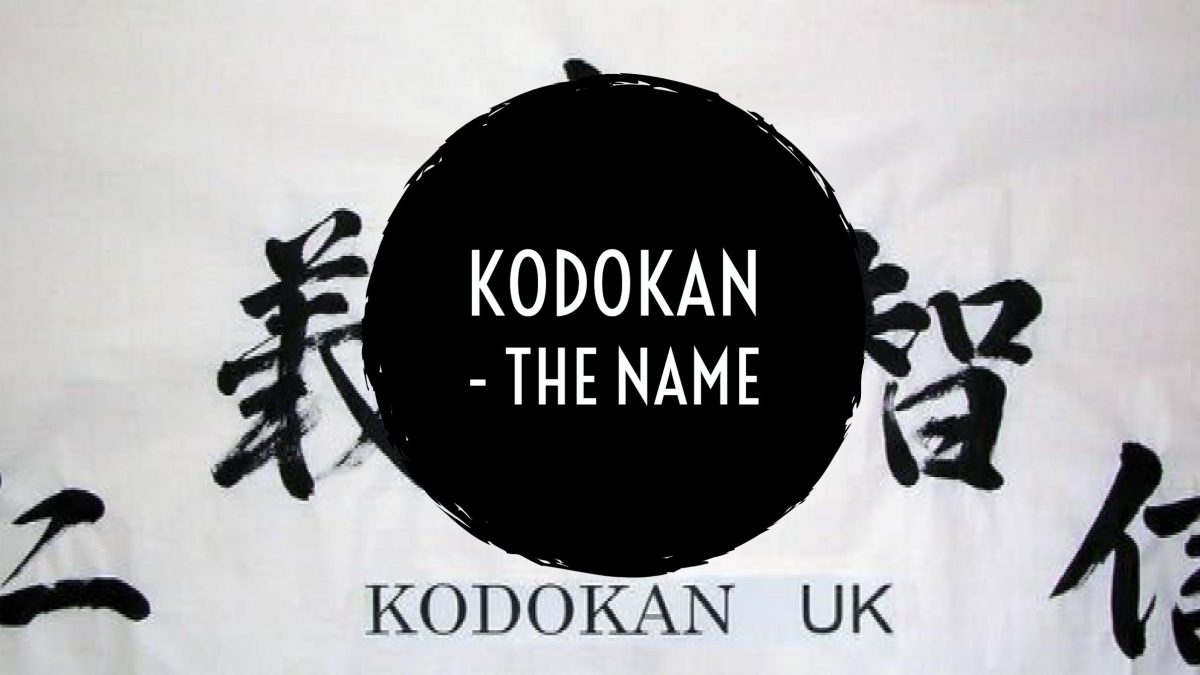

Here Paul is pictured with his eldest son Rene’ and Imasa to Sensei outside the Kyoto Butokuden.
Originally called Atarashi the dojo founded by Paul Budden was changed to Kodokan around 1988. Paul wrote the following about why.
“Because of my friendship with Les Denniston (a Scot well known for his appearance in ‘the Way of the Warrior’ a BBC TV martial arts documentary and who has lived in Japan for nearly 40 years). Les introduced me to Masayoshi Imasato ‘Emeritus Professor’ at Kyoto Sangyo Daigaku and I had been able to practice Kendo at the Kyoto Kodokan and with Imasato sensei’s support, I was able to take both the 4th dan & 5th dan Kendo examinations in Kyoto.
At that time the dojo in the UK was renamed in honour of the close relationship that had been formed. It was also through this relationship that I was able to meet Jumpei Matsumoto. His outstanding teaching and support for Kendo in the UK, started the ‘Kodokan seminar’ which celebrates 31 years this year”.
The Kyoto Kodokan sadly closed its doors after 90 wonderful years in 2014 and the Kodokan legacy was passed to Paul Budden and Kodokan UK by Imasato sensei in March 2015
A further from Paul:
“When preparing ‘Looking at a far mountain’ and practising at the Kyoto Kodokan I found further information about Ogawa Kinnosuke, Kodokan and the link with the Nihon kendo Kata, that was also why I asked Hirose sensei (over 85 at that time, he had been the ‘best student’ of Ogawa sensei) to do the kanji: ‘enzan no metsuke’ (This only appears on the hard copy version – 1st publication). I felt that there was something very special, making sense out of all the different items and aspects of Kendo that I had been able to assemble through study and practice together with the close relationships that had been formed and that is why I renamed my dojo here in the UK: Kodokan”.

(ko) means ” for making known “, or “for spreading” the Way

Kendo means “Sword way.”Kodokan is the Hall for making known the Way of Kendo.
The “Do” ending has enormous philosophical meaning. It is Japanese for the Chinese word “Tao.” Also known in Japanese as “Michi” and in Buddhism it means the road to enlightenment.
What also was discussed was the further meaning of Kodokan using the character for wide (instead of making known) as in:

wide alt(ko) –

wayalt (do) –

place alt(kan)
Jumpei Matsumoto adds to this with the following explanation of how the Kyoto Kodokan got it’s name.
“I would like to explain the origin of the Kyoto Kodokan Dojo’s name-word ” KODOKAN”.
” KODO ” has come from the name of a person.
” KAN ” means building, so when we use ” KAN ” in Kendo , it means Dojo.
Japanese ” KODOKAN” Dojo was founded by Mr.Kinnosuke Ogawa sensei in 1924 as his private Dojo. He used to be a professor at the Special Budo University in Kyoto since 1919. At that time Mr. Kodo Nishikubo sensei was the principal of the university. As Ogawa sensei respected Kodo Nishikubo sensei very much, he named his Dojo ” KODOKAN” after his teacher.
Mr. Kodo Nishikubo sensei had been a minister at one time and had been at the University as the principal from 1919 to 1926, he then became mayor of Tokyo. He was a very big man and had been learning Kendo in the classical school of MUTO-RYU. He always attacked with very big straight MEN Cuts using a short shinai which is characteristic of this style.
